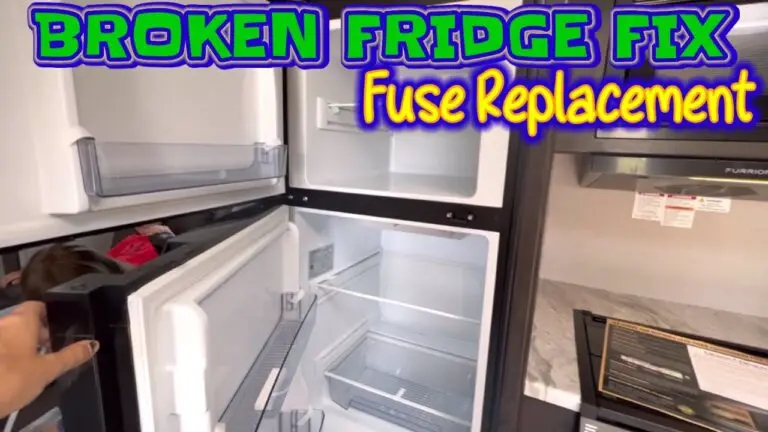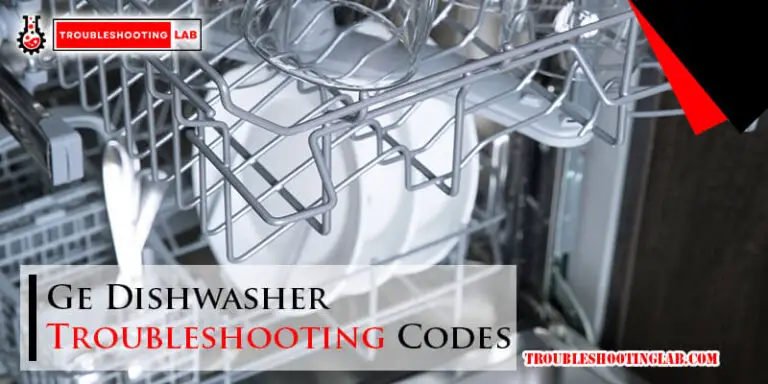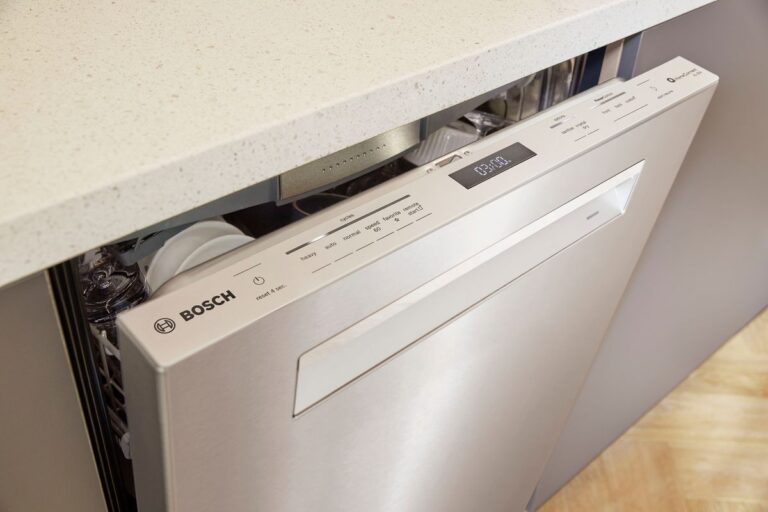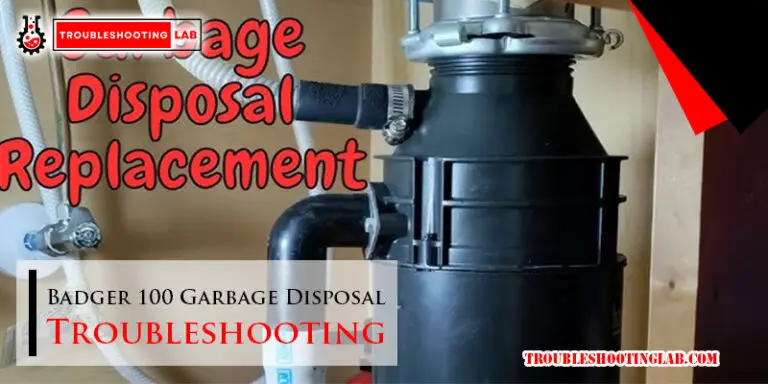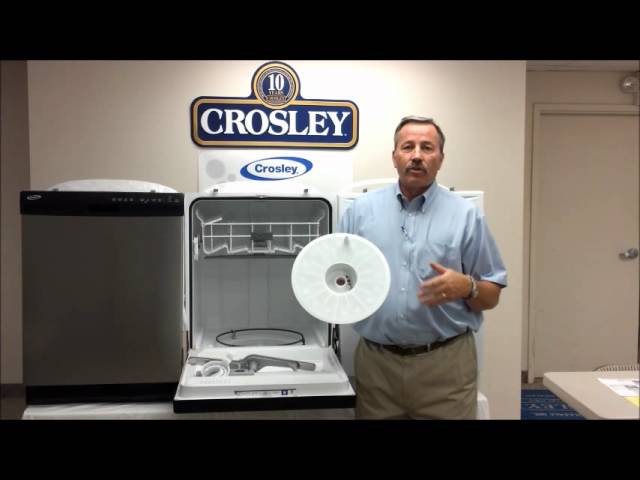Whirlpool Quiet Partner Ii Troubleshooting: Quick Solutions
Is your Whirlpool Quiet Partner II dishwasher giving you trouble? You’re not alone.
Many users find themselves puzzled by unexpected glitches or performance issues with this popular appliance. Before you consider calling a technician or replacing your dishwasher, there are a few troubleshooting steps you can try yourself. Tackling these issues on your own not only saves time but also money.
Imagine the satisfaction of fixing the problem and having your dishwasher run smoothly again. In this guide, we’ll walk you through the most common problems and simple solutions, empowering you to handle these hiccups with confidence. Stick around, and you might just become your household’s go-to dishwasher expert.
Common Issues With Quiet Partner Ii
When your Whirlpool Quiet Partner II starts acting up, it can disrupt your daily routine. This reliable dishwasher is a favorite in many households, but like any appliance, it can face some common issues. Let’s explore these problems and how you can tackle them with ease.
Dishwasher Not Starting
Imagine planning a family dinner only to find your dishwasher won’t start. This issue can be frustrating. First, check if the door is fully closed and latched. A simple oversight can prevent the machine from starting.
If the door is secure, inspect the power supply. Ensure the dishwasher is plugged in properly and the circuit breaker hasn’t tripped. Sometimes, it’s just a matter of flipping a switch.
Consider the control panel settings. A child lock or delayed start might be activated, stopping the dishwasher from running immediately. Disabling these features could solve the problem.
Poor Cleaning Performance
Ever opened your dishwasher to find dishes still dirty? Poor cleaning can be a common issue. Start by checking the spray arms. These could be clogged or blocked by large items, preventing water from reaching all dishes.
Ensure you’re using the right detergent and loading dishes correctly. Overloading or improper placement can hinder cleaning. Adjust your habits for better results.
Inspect the filters. Dirty filters can impact cleaning efficiency. Regularly clean them to maintain optimal performance.
Unusual Noises
Unusual noises can be unnerving. Have you ever wondered what those strange sounds mean? They might indicate a problem. Loose items like cutlery can cause rattling sounds, so check the interior for misplaced items.
Grinding noises could be a sign of debris in the pump area. Cleaning this part can resolve the issue and restore peace to your kitchen.
Listen for any changes in sound patterns. Persistent noises may require professional attention to prevent further damage. Don’t ignore these signals; they could save you from costly repairs.
Which of these issues have you faced? Share your experiences below, and let’s find solutions together.

Credit: www.scribd.com
Troubleshooting Steps
Experiencing issues with your Whirlpool Quiet Partner II can be frustrating. To fix problems, follow these troubleshooting steps. They will help identify and resolve common issues. With clear instructions, you’ll have your dishwasher working smoothly again.
Checking Power Supply
First, ensure your dishwasher is receiving power. Check the power cord for any damage. Verify the outlet is working by testing it with another device. If the outlet is faulty, you may need an electrician. Also, inspect the circuit breaker. Ensure it’s not tripped or turned off.
Inspecting Water Supply
Next, examine the water supply to your dishwasher. Make sure the water valve is fully open. Check for any kinks in the water hose. A blocked hose can restrict water flow. Also, inspect for leaks or damage. Replace the hose if necessary.
Cleaning Filters
Filters can clog over time, affecting performance. Locate the filters at the bottom of the dishwasher. Remove them carefully and clean them under running water. Use a soft brush to remove debris. Reinstall the filters properly to ensure optimal function.
Resolving Drainage Problems
Is your Whirlpool Quiet Partner II dishwasher leaving water pooled at the bottom? Drainage problems can be frustrating, but fear not. With a bit of troubleshooting, you can get your dishwasher running smoothly again. Whether it’s a blocked drain, a faulty hose, or a pump issue, these practical steps will help you resolve the problem efficiently.
Clearing Blockages
Start by checking for blockages in the dishwasher’s drain system. Food particles and debris can often accumulate and cause clogs. Remove the bottom dish rack and inspect the drain area for any visible obstructions.
Try using a flashlight to get a better view. If you find any debris, carefully clear it out using a soft brush or cloth. It’s amazing how a simple check can often solve drainage issues.
Inspecting Drain Hose
The drain hose is another common culprit when it comes to drainage problems. You might be surprised how easily it can become kinked or blocked. Carefully pull out your dishwasher to access the hose.
Inspect it for any twists or obstructions. Ensure it’s properly connected to both the dishwasher and the sink drain. A straightforward adjustment can often make a big difference.
Testing The Pump
If blockages and hose issues aren’t the problem, it might be time to test the pump. The pump is vital for pushing out the water from the dishwasher. Consider listening closely for unusual sounds when your dishwasher is running.
If the pump is making odd noises, it may be faulty or damaged. You can refer to the manual for guidance on replacing or repairing the pump. Remember, a pump that works smoothly is crucial for effective drainage.
Have you ever tackled a dishwasher drainage problem successfully? Share your experiences and tips below. Your insights could help others facing similar challenges!
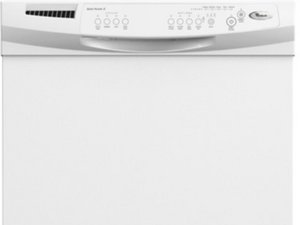
Credit: www.ifixit.com
Addressing Error Codes
Dealing with error codes on your Whirlpool Quiet Partner II can be frustrating. These codes are signals from the dishwasher. They indicate specific problems that need attention. Understanding these codes can help resolve issues. The process is simpler than it seems. Let’s dive into common error codes and how to reset the control board.
Understanding Common Codes
Different codes represent different issues. ‘F1’ indicates a door switch problem. ‘F2’ signals a water leak. ‘F3’ means the dishwasher is not draining. Each code helps pinpoint the issue. This makes troubleshooting more straightforward. Checking the manual can provide clarity. Knowing the codes is the first step in solving problems.
Resetting The Control Board
Resetting the control board can fix many issues. First, unplug the dishwasher. Wait for about five minutes. Plug it back in. This simple step often clears minor glitches. If problems persist, a hard reset might be needed. Consult your manual for detailed instructions. Resetting can often clear error codes.
Maintenance Tips
Troubleshooting a Whirlpool Quiet Partner II involves checking common issues like leaks and noise. Inspect the door seal for debris and clean it regularly. Ensure the spray arms are not blocked and rotate freely for optimal performance.
Maintaining your Whirlpool Quiet Partner II dishwasher doesn’t have to be a daunting task. With a few simple maintenance tips, you can ensure your appliance runs smoothly and efficiently. Regular upkeep not only prolongs its lifespan but also enhances its performance. So, let’s dive into some practical maintenance advice for keeping your dishwasher in top shape.Regular Cleaning Routine
A regular cleaning routine is essential for your dishwasher’s health. Start by wiping down the door seals and edges with a damp cloth. This prevents debris buildup, which can affect the door’s seal and lead to leaks. Once a month, run an empty cycle with a cup of white vinegar placed on the top rack. This helps remove soap scum and hard water deposits. Adding a sprinkle of baking soda to the bottom can also deodorize and leave your dishwasher smelling fresh. Don’t forget the filters! Check and clean them monthly to ensure food particles don’t clog the system. Simply remove the filters, rinse them under running water, and scrub away any stubborn bits with a soft brush.Parts Inspection
Inspecting your dishwasher’s parts regularly can save you from unexpected repairs. Start with the spray arms. Make sure they’re spinning freely and not obstructed by food particles. If needed, use a toothpick to clear any clogged holes. Examine the racks for rust or damage. If you notice any rust spots, consider using a dishwasher rack repair kit to prevent further deterioration. Are the wheels on the racks rolling smoothly? If not, they might need a quick adjustment or replacement. Take a close look at the door gasket. A worn-out gasket can lead to leaks. Run your fingers along the rubber to check for any tears or signs of wear. Replacing it is a simple fix that can prevent bigger issues down the line. When was the last time you checked the water inlet valve? If your dishwasher isn’t filling properly, this could be the culprit. Ensure it’s free of debris and functioning correctly. By keeping a vigilant eye on these parts, you’re not only maintaining your dishwasher but also saving yourself time and money. Ask yourself, how often do you inspect your appliances at home? It might be time to start a routine check-up.
Credit: www.youtube.com
When To Call A Professional
Persistent issues with your Whirlpool Quiet Partner II, like continuous error codes or water leakage, may signal the need for expert help. Professional assistance ensures safe and effective solutions, protecting your appliance’s longevity.
When dealing with Whirlpool Quiet Partner II issues, knowing when to call a professional is crucial. While some problems are simple, others require expert intervention. Understand the signs that indicate complex issues and the benefits of warranty services.Identifying Complex Issues
Sometimes, dishwasher problems are more than just annoying noises. If the machine doesn’t start or dishes remain dirty, these could be signs of deeper issues. Water leaks or unusual sounds often indicate mechanical problems. Electrical faults or persistent errors on the display need professional attention. Specialists can identify and resolve these complex issues.Considering Warranty Services
Using warranty services ensures proper repair without extra costs. Check if your dishwasher is still under warranty. Warranty services often cover parts and labor for repairs. Professional technicians ensure all work complies with Whirlpool standards. This maintains the warranty and protects your appliance. Calling a professional under warranty can save money and time.Frequently Asked Questions
Why Is My Whirlpool Quiet Partner Ii Not Starting?
Check the power supply. Ensure the door is fully closed. Examine the control settings.
How Do I Reset My Whirlpool Quiet Partner Ii?
Press and hold the “Heated Dry” button for 4 seconds. This resets the dishwasher.
Why Is My Dishwasher Not Draining Water?
Check for clogs in the drain hose. Clean the filter and ensure the drain pump works.
How Can I Fix A Leaking Whirlpool Quiet Partner Ii?
Inspect door seals for damage. Tighten loose connections. Check water inlet valve and hoses.
What Causes Loud Noises During The Cycle?
Check for loose items inside. Examine spray arm for obstructions. Ensure the dishwasher is level.
Conclusion
Troubleshooting your Whirlpool Quiet Partner II can be straightforward. Start by checking the basics. Look for blockages in the dishwasher. Ensure power connections are secure. Clean filters for better performance. Regular maintenance helps avoid issues. Consult the user manual for guidance.
Reach out to professionals if problems persist. Your dishwasher should serve well with proper care. Small issues can be fixed easily. Save time and money with simple checks. Keep your dishwasher running smoothly. Enjoy quiet and efficient dishwashing every day.

